
Flare Systems
unassisted
Zeeco's non-assisted flares and utility flares are used in applications that don't require smokeless operation, or where smokeless operation can be achieved without the assistance of external steam, air or pressure.
Utility flare tips are used for combustion of gases that do not produce smoke, gases with a low heating value, or for installations where smokeless combustion of heavy hydrocarbons is not required. Utility flare tips are one of the lower capital cost options for safe disposal of waste gases.
Zeeco’s UF style flare tip assembly utilizes a unique arrangement of proprietary flame stabilization tabs to ensure stable and high efficiency flaring through the entire design range of flows, from maximum emergency flaring to purge gas flow rates. The flame stabilization tabs work in conjunction with constantly burning pilot assemblies to ensure ignition of the waste gas. The flame stabilization tabs create a low pressure zone at the perimeter of the flare tip gas exit point, providing an area of slow moving gases that can be easily ignited by the pilot assembly. Zeeco flame stabilization tabs are unique, fully investment cast assemblies, mounted to the flare barrel using plug welds, to avoid stress risers and to eliminate cracking associated with linear welding in high heat zones.
Zeeco offers complete skid-mounted and trailer-mounted flare assemblies, as well as aftermarket products, services and engineered solutions.
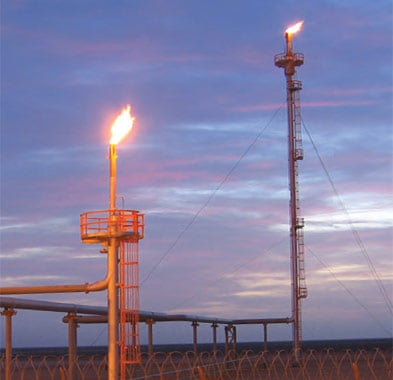
smokeless
Zeeco offers both single-point and multi-point gas-assisted flares for smokeless burning of low- pressure, heavy hydrocarbons. Our patented designs deliver stable burning, high-destruction efficiency and low radiation levels wherever steam or air is unavailable.
VariJet Tip: VJ Series
Zeeco’s high-pressure VariJet™ flare tip assembly is carefully engineered to provide years of reliable and efficient service in challenging environments.
Contour Smokeless Flare Control System
The ZEECO® Contour™ is an automatic flare control system created by Zeeco flare engineers for the specific purpose of optimizing flare control to prevent non-compliance with environmental
Air-Assisted Flare
Zeeco’s AF flare series uses advanced technology proven to achieve smokeless flaring when neither steam nor assist gas is available or economical.
HPAAS Flare
HPAAS uses supersonic air injection nozzles to inspirate combustion air at a much higher efficiency than previous air assisted smokeless flaring technology.
SteamForce HC
Zeeco’s SteamForce HC™ straight tube uses a true venturi design, significantly increasing efficiency and decreasing dependence on fuel gas and steam pressure to achieve smokeless combustion.
Low Noise / High Efficiency Steam Assisted Flare
The ZEECO® HCL series flare tip provides control of smoke in a flare system through the engineered injection of steam and inspirated air.
Steam-Assisted Flare: QFS Series
Zeeco’s QFS series flare is a proven, reliable technology that utilizes steam injection to suppress smoke.
Ground / Enclosed
Zeeco offers a comprehensive range of multi-point and enclosed ground flares for applications where at-grade levels achieve higher combustion efficiency for fully smokeless performance, or where government compliance requires flame concealment.
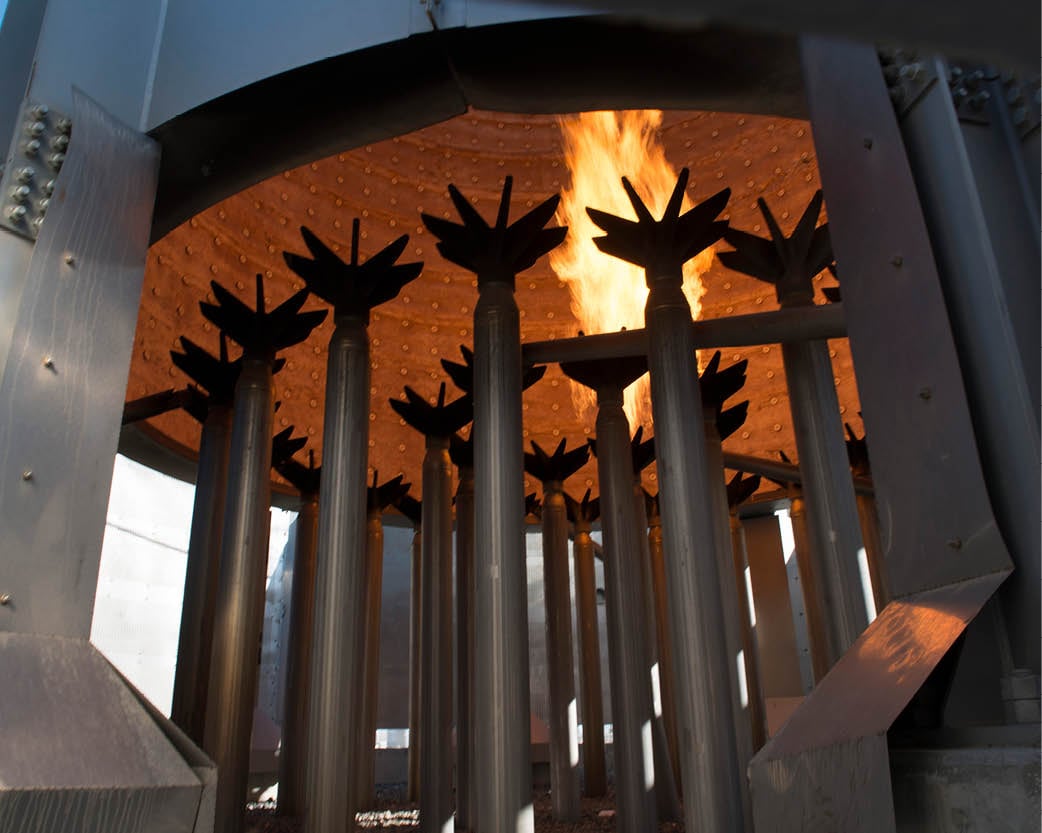
BioGas Enclosed Flare
Zeeco’s biogas enclosed flare system incorporates the latest features and options to handle a wide range of flow rates and to ensure optimal performance.
Multi-Point Ground Flares
When highly variable volumes of waste gas must be flared smokelessly, but exceed the practical design limits of a single steam assisted or air assisted flare, our Multi-Point Ground Flare may be
AFRC Paper: MPGF
Noise Testing and Prediction Methods for Multi-Point Ground Flares
zero routine flaring
Flares are a necessary safety system in processing facilities across many industries. Although the need for flaring systems isn’t likely to be eliminated, Zeeco continues to bring innovative solutions to the market to reduce the impact of continuous flaring worldwide.
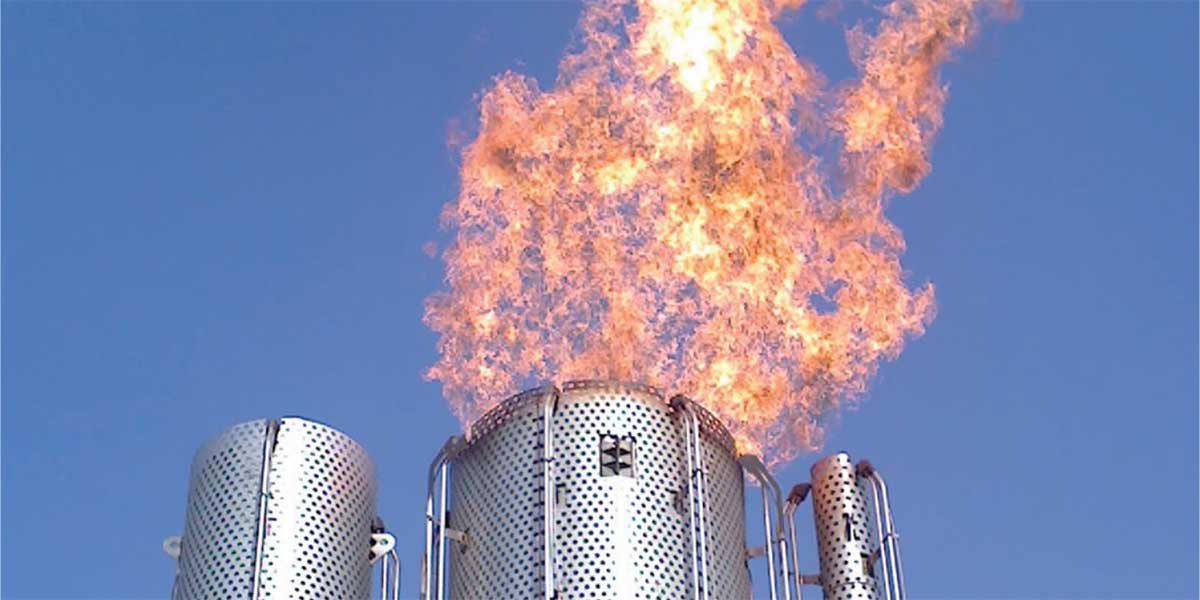
VariJet Tip: VJ Series
Zeeco’s high-pressure VariJet™ flare tip assembly is carefully engineered to provide years of reliable and efficient service in challenging environments.
AFPM: Flare Gas Recovery
Solutions for Minimizing the Impact of Subpart Ja for Flare Systems. As Presented at AFPM Environmental Conference, 2014
Hydrocarbon Engineering: Vapor Control
Simon Shipley, Zeeco Europe Limited, UK, discusses the decision between two common vapour control technologies, recovery or combustion, in tank and terminal applications.
Flare Gas Recovery
With the implementation of the latest EPA NSPS Ja flare regulations, refineries are under tremendous pressure to dramatically reduce overall plant emissions to avoid costly consequences.
Vapor Recovery Systems
Whether you operate a truck, marine or rail car loading terminal, or storage tank facility, you already know fugitive emissions from the product loading process and the tanks can represent losses
Vapor control
Flare Gas Recovery (FGR) is the process of recovering the waste gases that would normally be flared, so they can be used as fuel gas elsewhere in the facility. This results in reduced emissions and cost savings.
TriClean Vapor Combustor Unit
Zeeco’s TriClean Vapor Combustor Unit (VCU) delivers volatile Organic Compound (VOC) destruction and removal efficiencies (DRE) of up to 99.99%
AFPM: Flare Gas Recovery
Solutions for Minimizing the Impact of Subpart Ja for Flare Systems. As Presented at AFPM Environmental Conference, 2014
Vapor Combustor Rentals
Zeeco maintains a rental fleet of skid and trailer-mounted vapor combustor units (VCU) staged around the world and available on demand. Designed with the end user in mind, our rental vapor
Biogas Utility Flare
Our extensive field experience and proven designs dispose of methane and other decompositions both efficiently and effectively – and offer the long-lasting reliability you’ve come to expect from
Flare Structures
Guyed
Guy-supported (guyed) type stacks are one type of support system for an elevated flare. The elevated flare tip is mounted on top of a riser supported through a system of cables (guy-wires), typically arranged with a set of three (3) cables at 120 degree angles. Guyed flares require multiple deadman foundation anchors to anchor the cables to the ground, and therefore this support system necessitates a larger plot space than other support systems. The design of guy-supported flares requires special attention to process temperature conditions in conjunction with multiple levels of guy-wires.
Guyed Derrick
Guyed derrick type stacks are one type of support system for an elevated flare. The elevated flare tip is mounted on top of a riser supported by both a steel trussed derrick structure and through a system of cables (guy-wires), typically arranged with a set of three (3) cables at 120 degree angles. Similar to a guyed flare, a guy derrick flare requires multiple deadman foundation anchors to anchor the cables to the ground, and therefore this support system necessitates a larger plot space than other support systems. It also requires a smaller, more economical derrick structure compared to a conventional type of derrick supported flare. Guyed derrick flares eliminate concerns associated with process temperature designs.
Derrick
Derrick type stacks are one type of support system for an elevated flare. The elevated flare tip is mounted on top of a riser supported by a steel trussed (derrick) structure. Derrick supported flares require three or four additional foundations for the derrick legs, but this is a relatively smaller plot space when compared to a guyed flare of the same height. Derrick flares eliminate process temperature design concerns. Additionally, a single common derrick structure can support multiple flare risers.
Demountable Derrick
Demountable derrick type stacks are one type of support system for an elevated flare. The elevated flare tip is mounted on top of a riser supported by a steel trussed (derrick) structure. Similar to a conventional derrick supported flare system, demountable derricks require three or four additional foundations for the derrick legs. Due to the economic impact of shutting a flare down and the requirement for large cranes, users welcome a means to be able to lower the flare tip to grade for maintenance, inspection, or repair activities without ever having to shut the flare down. A demountable derrick allows a user the ability to lower the flare tip and pilots to grade through the use of a winch system (typically three different winches), guide rails, tilting tables, and flanged riser sections. Demountable derricks eliminate concerns associated with process temperature designs. Additionally, a single common demountable derrick structure can support multiple flare risers.
Self-Supported
Self supported type stacks are one type of support system for an elevated flare. The elevated flare tip is mounted on top of a free-standing riser consisting typically of multiple diameter cylinder sections. Self supported flares require only one foundation and therefore a relatively small plot space. Riser is maintenance free, and no concerns for process temperature conditions are required. Self supported stacks can be designed to lift in multiple sections or as a single piece (fully dressed with ladders, platforms and utility piping). This type of support system is generally limited in height due to the base diameter section (whether by shipping constraints or economic feasibility of fabricating at the jobsite).
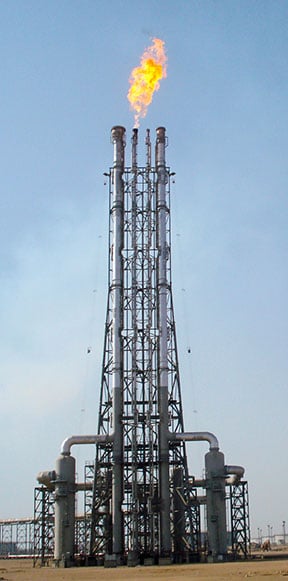
Flare Control Systems
Flare systems require many different types of controls. Controls are required for the ignition and monitoring of flare system pilots, control of fluid levels in knockout and liquid seal drums, for the control of steam or air or water or gas injection for control of smoke, measurement of oxygen, measurement of lower heating value, adjustment of assist gas injection, adjustment of blower speed for control of smoke, snuffing system controls, purging systems, staging controls, pump packages, solar power systems, etc.
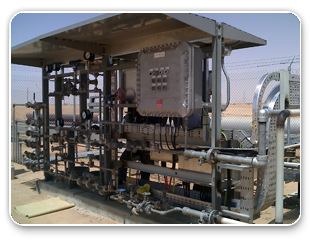
Auxiliary Equipment
Purge Reduction Devices
Velocity Seals
- Integral Piece of Equipment Within the Flare Tip
- Does NOT Require a Dedicated Drain Line
- Ensures O2 Level Does Not Reach Over 6-8% Below the Velocity Seal Device
Gas (Buoyancy) Seals
- Separate Piece of Equipment Below Flare Tip
- Requires a Dedicated Drain Line
- Ensures O2 Level stays near 0.1% for the Gas Seal Device (for most compositions)
Liquid Seal Drum
Liquid seal drum is a safety device usually located in the stack base to prevent a flashback from entering the piping upstream of the flare.
Knockout Drum
Knockout drums are used to collect any liquid entrained in a waste gas stream.
KnockOut drum types include:
- Separate / Stand-Alone (Horizontal or Vertical)
- Integral in Stack Base (Vertical)
Combination Liquid Seal / Knockout Drum
The ZEECO combination liquid seal/knockout drum protects the flare header from air infiltration or flashback from entering the piping upstream of the flare (liquid seal) and is also used to remove and store condensed and entrained liquid (knockout drum).
Blowers
Zeeco can supply many different types of blowers including Engine Driven, Vaneaxial and Centrifugal.
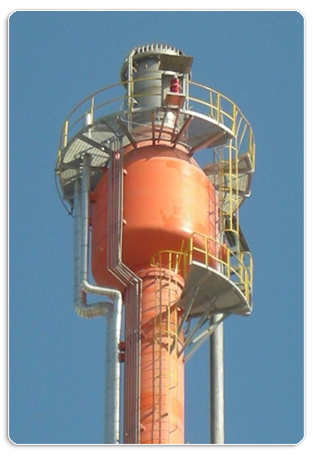
Services we offer
MARKETS WE SERVE
Zeeco can provide combustion and emissions control solutions wherever hydrocarbon processing takes place. Customers can find our equipment and services in upstream, midstream, and downstream oil and energy processes.
We also offer products and support for other industries and applications such as tank/terminal loading and storage, pharmaceutical, carbon black, pulp & paper, steel, food processing, and more.














